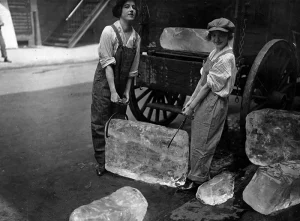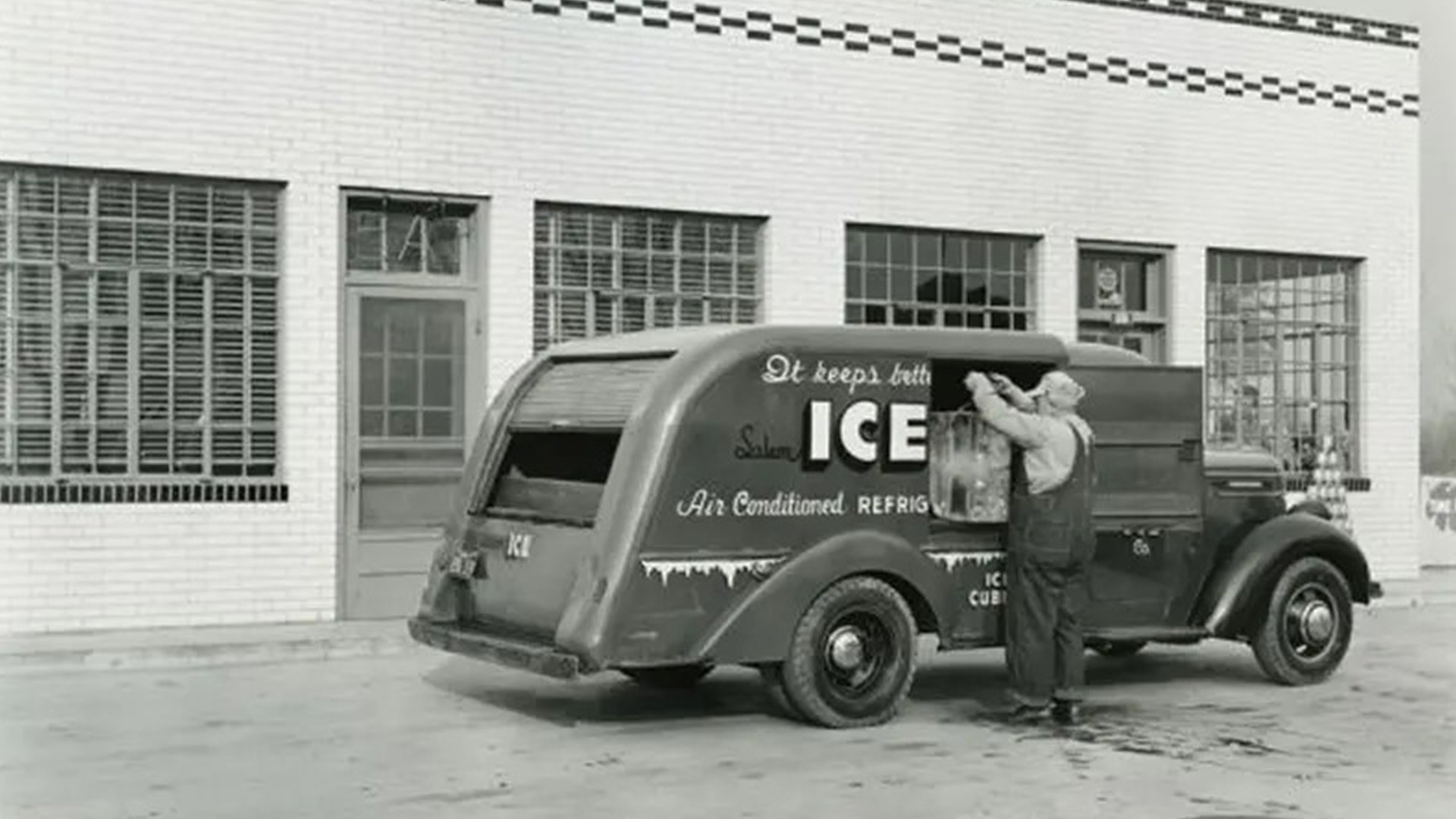The history of refrigeration is a testament to human ingenuity. From ancient methods of food preservation to modern walk-in coolers, this journey has been marked by significant advancements in technology and, equally as important, safety.
Long before the hum of modern refrigerators, ancient civilizations relied on Mother Nature to preserve food. Snow and ice were the go-to solutions at that time. The Egyptians, Greeks, and Romans pioneered these natural cooling methods.
This practice evolved over many years and finally became a thriving ice trade in the 19th century. Ice was harvested from cold regions and shipped to warmer climates, presumably quickly.
The Dawn of Refrigeration
William Cullen, a Scottish professor and physician, invented the first artificial refrigeration in 1748. Although he didn’t employ the technique in practice, he demonstrated how evaporating a liquid into a gas quickly has a cooling impact.

The Birth of Industrial Refrigeration

As commercial refrigeration expanded in the early 20th century, a growing demand for larger cold storage spaces led to the development of walk-in coolers. These were essential for breweries, meatpacking plants, and restaurants. However, early walk-in coolers lacked critical safety features, leading to incidents of workers becoming trapped inside.
Safety Innovations in Refrigeration
After several such tragic incidents, there was a push for increased safety in refrigeration. Key safety improvements included:
Panic Bars: These allow people to easily open cooler doors from the inside, preventing freezing to death.
Temperature Monitors and Alarm Systems: These alert staff to temperature fluctuations, which helps reduce the chance of foodborne illness caused by bacteria growth on thawed foods.
Emergency Lighting: Proper lighting is always a good safety tool, helping reduce the risk of accidents in dark environments. Emergency lighting is also important for safety during power outages so employees can always exit.
Pressure Equalization Systems: These make opening heavy cooler doors easier, reducing the risk of strain injuries.
Carbon Dioxide and Oxygen Sensors: These sensors alert workers to leaks in CO2 refrigeration systems that could lead to asphyxiation.
Integration with Facility Management Software: This allows real-time temperature monitoring and quick response to any issues.
Refrigeration Regulations
As refrigeration technology has evolved, so have the regulations governing its use. The Occupational Safety and Health Administration (OSHA) has established guidelines for working in cold environments, including walk-in coolers and freezers. These regulations cover what PPE to use, safe work practices, emergency procedures, and more.
Conclusion
The evolution of refrigeration technology demonstrates a consistent dedication to safety and efficiency in food preservation. From Gorrie’s initial experiments to today’s advanced refrigeration and walk-in cooling systems, innovation and creativity have transformed food storage and significantly improved public health, worker safety, and food preservation.
However, the journey doesn’t end here. To stay ahead of the curve and promote a culture of safety in your workplace, it’s important to advertise safety 24/7. Check out CrewSafe’s award-winning Off The Wall Safety Awareness Poster Program that has assisted some of the world’s largest brands in reducing safety incidents and costs by up to 40%.
Sources
- Britannica, The Editors of Encyclopedia. Refrigeration. Encyclopedia Britannica, 9 Jul. 2024, https://www.britannica.com/technology/refrigeration(Accessed 07 October 2024)
- Britannica, The Editors of Encyclopedia. John Gorrie. Encyclopedia Britannica, 12 Jun. 2024 https://www.britannica.com/biography/John-Gorrie (Accessed 23 September 2024)
- Wikipedia contributors, Carl von Linde, Wikipedia, The Free Encyclopedia, 18 June 2024,https://en.wikipedia.org/w/index.php?title=Carl_von_Linde&oldid=1229687605 [Accessed 26 September 2024]
- Turan B. (2024, March 28) What are The Health and Safety Standards for Walk-in Refrigeration? Chefs Deals. https://www.chefsdeal.com/blog/health-and-safety-standards-for-walk-ins#:~:text=Walk%2Din%20refrigeration%20design%20requirements,the%20door%20from%20the%20inside. (Accessed 07, October 2024)
- Bush Refrigeration. Practicing Employee Safety in Walk-In Coolers & Freezers. Available at: https://bushrefrigeration.com/blogs/main/practicing-employee-safety-in-walk-in-coolers-freezers. (Accessed 07, October 2024)
- Cafco Services. Walk-In Coolers and Freezers: Safety Practices to Follow. (April 7, 2020) Available at: https://www.cafcoservices.com/blog/hvac/walk-in-coolers-and-freezers-safety-practices-to-follow/. (Accessed 07, October 2024)
- OSU Environmental Health and Safety (December 2017. Walk-in Coolers and Freezers. Available at: https://ehs.oregonstate.edu/sites/ehs.oregonstate.edu/files/pdf/si/walk-in_coolers.pdf. (Accessed 25, September 2024)
- Rare Historical Photos – Images. (2024) The Story of the Icemen Through Vintage Photos. Available at: https://rarehistoricalphotos.com/ice-delivery-old-photos/. (Accessed 26, September 2024)

